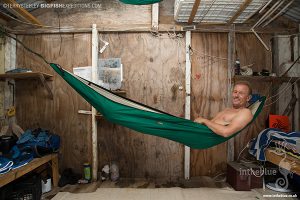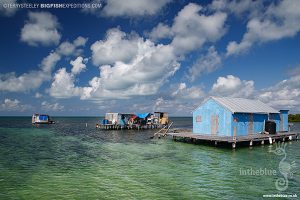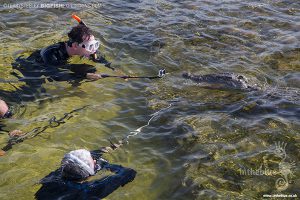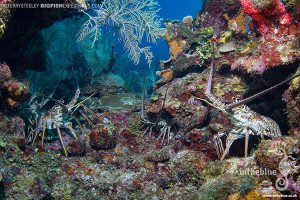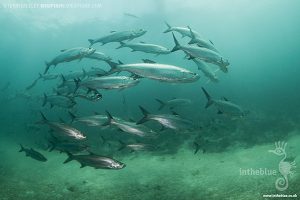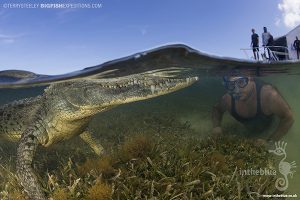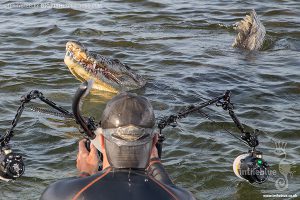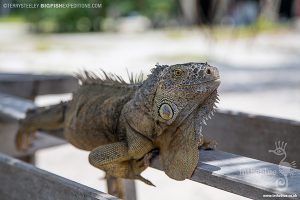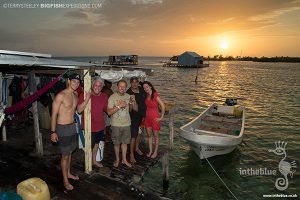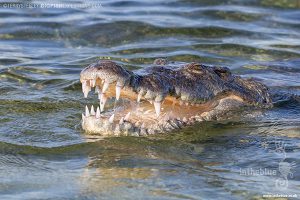From the moment we first arrived in Mexico, the American crocodile trip felt like an ‘adventure’. The epic 6 hour/400km road trip from Cancún to Xcalak was the perfect opportunity to get to know and bond with other members of our small group. It was also the last time we would collectively appreciate air conditioning for a week!
Located on the Southern end of the Costa Maya, Xcalak village is considered to be one of the last ‘unspoiled’ stretches of the Mexican Caribbean coast; blue skies, white sand and turquoise water, it’s a living picture postcard and home for the first few nights before visiting the American crocs.
Diving in Xcalak was extremely relaxed but professionally run. XTC’s dive centre divemasters took care of our every need; preparing, carrying and washing all of our dive equipment, all we needed to do was turn up. Two guided boat dives a day allowed us to explore Xcalak’s national marine park’s unspoilt reefs. Favourite dives; La Poza, La Chimenea and Poza Rica were all very different, but memorable. Marine life was varied and bountiful; schools of huge tarpon, jacks and snapper; giant midnight blue parrotfish, eagle rays, lobsters, octopus and light bathed swim-throughs packed full of silver sides were just a handful of the many highlights. Even an unsuccessful search for the elusive, but incredibly cool West Indian manatee failed to dampen our spirit, only serving to remind us, that if it was guaranteed, then this would be Seaworld and not a unique diving experience.
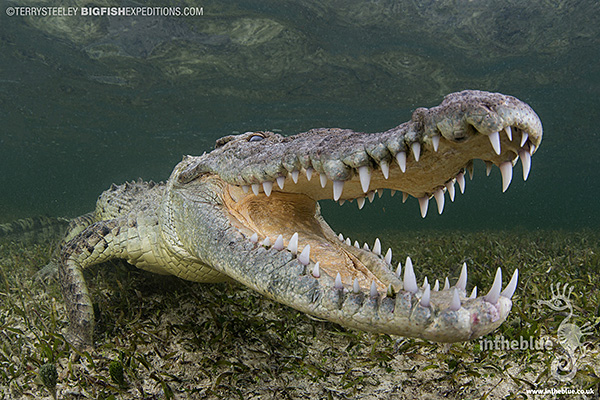
Afternoons perfectly complimented the laid-back mornings. Guests enjoyed a range of activities from sun-bathing, snorkeling, kayaking, photography or looking for iguanas in the hotel grounds. Inevitably, we’d gravitate into the bar checking out the cocktail menu later in the afternoon, although the blended margaritas were Eduardo’s house speciality at the Hotel Tierra Maya.
When the sea conditions were right, we headed out to the ‘Hotel Chinchorro’, Andy’s affectionate term for the utilitarian stilted fisherman’s shack in the shallow waters of the Banco Chinchorro atoll. Interestingly, the local fisherman refer to the atoll as ‘the ships’ graveyard’, due to the large number of ships that have sunk here over the years. We were incredibly lucky crossings the 36 nautical miles across the open ocean from Xcalak and delighted to only get wet on the outbound journey. I’ve heard stories of bumpy 4 hour crossings, but I am thrilled to say that for the time of year Big Fish Expeditions choose to visit Chinchorro, 2 hours appears to be normal.
A key element of our time in Banco Chinchorro is the early morning dives. These are essential, allowing us to hunt lionfish. Guests are permitted to spear fish alongside the guides, and enthusiastic parties are given the necessary guidance/training to allow them to hunt effectively. Lionfish may well be beautiful, vibrant and graceful in the ocean but in the Caribbean they are invasive and have a detrimental impact on the reef environment. The morning dives make a small contribution to help control the growing numbers of lionfish in the atoll. Surprisingly, lionfish ceviché is extremely tasty, but don’t take my word for it as it’s the favourite meal for attracting American crocodiles to come and play.
Banco Chinchorro boasts a healthy coral reef ecosystem and diving in the atoll is amazing. Abundant life, colourful coral, groupers, schools of snapper, turtles, pods of lobsters, stingrays and barracuda are commonplace. Nurse sharks became daily guests trying to steal a cheeky meal from the hunters. Even a few shy black tip sharks could be found during some dives. It was wonderful to see reefs flourishing despite global warming, climate change and human interaction.
The fisherman’s hut is epic! No wi-fi. No cell or mobile service. It’s simply an über cool shack in a fabulously remote location surrounded by some 700 American crocodiles and a few fishermen. Guests sleep in hammocks, which are exceptionally comfortable once you get the hang of getting in and out. Food is prepared and cooked by our boat captains and is first-class. However, this year’s visit coincided with lobster season and we were able to negotiate with a local fisherman for what can only be described as the freshest ‘catch of the day’. Lightly seasoned and drizzled with butter, it was a feast fit for a king.
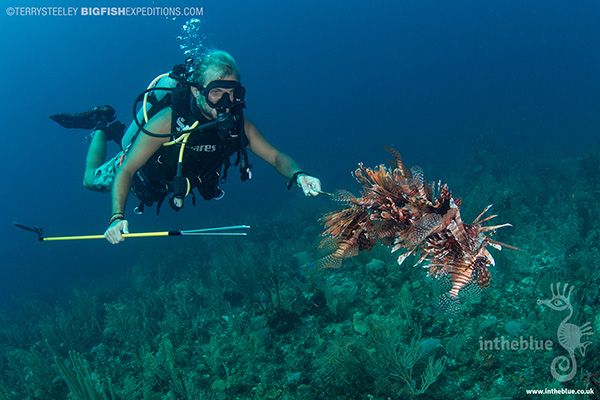
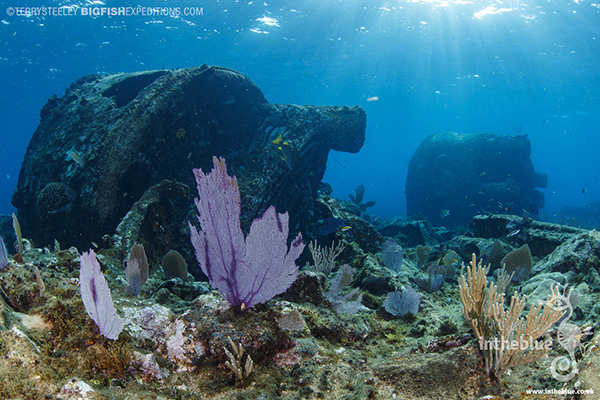
Although guests on both trips shared time in the water with the crocodiles, all went home with big smiles. The first week was truly standout, with guests sharing close contact with crocodiles from sunrise to sunset everyday. The photographers amongst the group were able to get really creative shots beyond the safe portfolio, GoPro users filled cards with hours of video, and those who just had a love of crocodiles were in awe of the prehistoric reptiles.
Two additional highlights of our time in Banco Chinchorro were an island visit to Cayo Central and a dive on the wreck of the SS Ginger Scout.
Cayo Central is the largest of the three uninhabited islands in the atoll and provides a temporary base for the fishermen, a ranger and crocodile researchers during different times of the year. There is a brick and mortar ranger station on the island, with a short trail leading to the small wooden huts in the quaint fishermen’s village on the eastern shore. Endemic giant iguanas bask everywhere, they were super relaxed around us and fabulously photogenic. Inevitably, we continued to looked for crocodiles, searching in the mangrove lagoons from the shore and a rickety observation deck. Departing the island, we took a lazy meander through the stilted fishermen’s huts and toured around the mangroves. The island tour is best taken in the morning whilst the slumbering American crocodiles are inactive.
On our final day at Chinchorro, we dived the wreck of the SS Ginger Scout. At rest in only 6m/18ft of water, it’s a rare treat to be able to dive the ship. She’s lying on the windward side of the atoll, and conditions need to be better than normal to make the dive safely. With the weather on our side, the SS Ginger Scout is shallow enough for a long dive and is fascinating. The wreck itself has been destroyed and only the large boilers and the shiny huge upstanding propeller make it obvious that you’re diving a wreck. The rest of the vessel has been consumed by the sea and is a spectacular artificial reef abundant in life. We chose to dive very early to enjoy the morning’s spectacular light show and we were not disappointed.
Returning to Xcalak allowed time for a few more reef dives before drying our kit and readying ourselves to return to civilsation. Our time in Xcalak and Banco Chinchorro was very special, we had come to expect frequent close contact with the American crocodiles and this was consistently achieved. Once more, we arrived as strangers and departed as friends.
The Big Fish Expeditions American Crocodile Expedition, is arguably one of my favourite trips of the year. It’s peppered with so many unique experiences that I always leave with a smile.
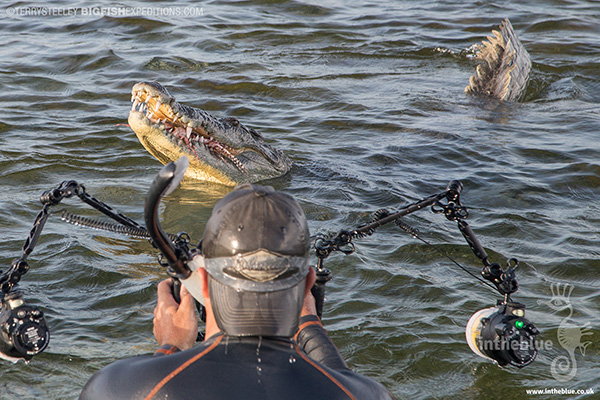
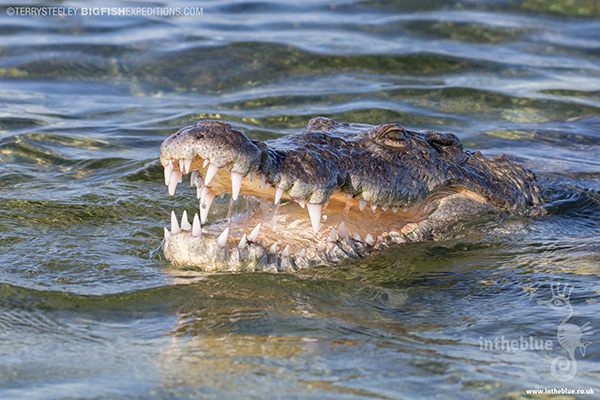
What the guests said…
“This crocodile trip was the most amazing experience I’ve had thus far. I’ve traveled a lot, but nothing was quite as authentic as getting to watch crocodiles up close in their natural habitat. It was absolutely amazing to be in the water with these aquatic reptiles and have the opportunity to photograph and video them right up close. The diving on the trip was excellent. There were a variety of dive sights, including a shipwreck that was only 15 feet deep so it was vibrant and full of sea life. I was worried about going this trip because I had no diving experience aside from my certification, and most of the group had been diving for years, but the guides were very knowledgeable, made sure to explain everything clearly and made me feel safe, which really added to the experience. When we weren’t diving or snorkelling there was great food and the staff was really fun. It really was a trip I’ll never forget. I recommend this trip for divers or animal lovers of any level!”
— Paige S —
“The American Crocodile trip hosted by Big Fish was an unique and incredible experience that I would recommend to anyone seeking adventure.”
— Issac R —
“It was truly an honor for the crocodiles to allow us to share the same space. I will definitely be booking more BFE trips in the future. Thanks for an amazing experience.”
— Jake M —
